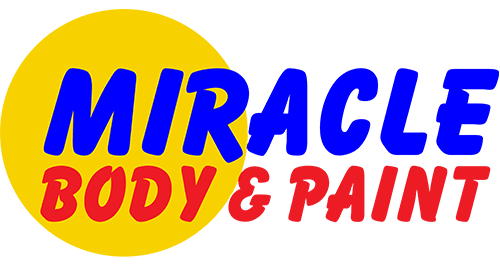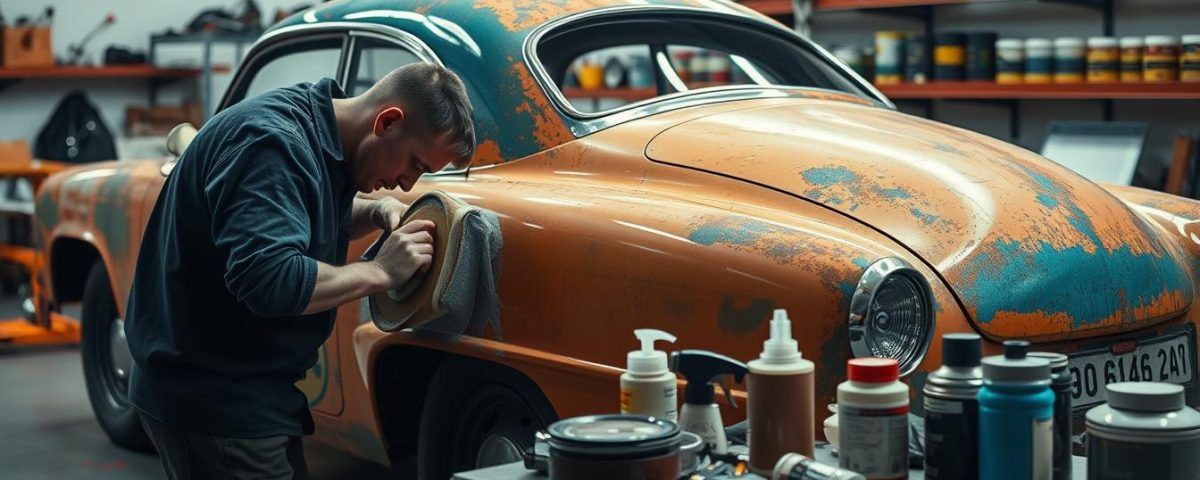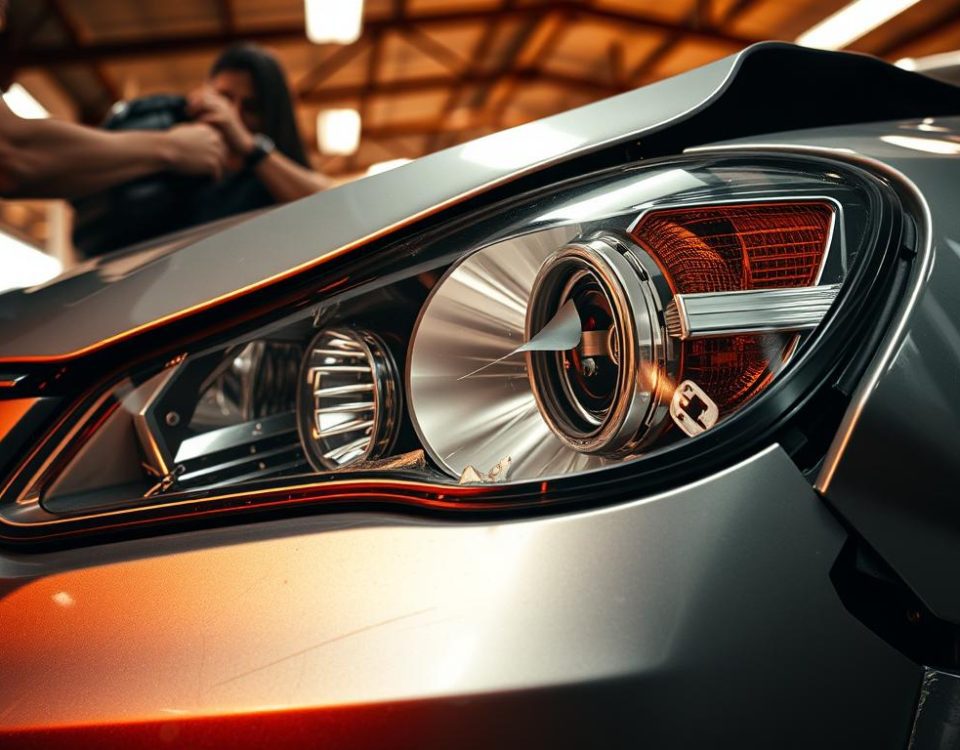
How Fleet Collision Repair Keeps San Antonio Businesses Moving
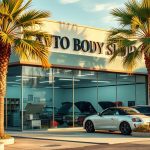
How to Choose the Right Collision Repair Shop in San Antonio
Your car’s finish can look like new again without a full repaint. You’ll learn how targeted paint restoration steps remove oxidation and surface haze. This guide comes from Miracle Body and Paint Collision Center and explains what pros do to bring a faded finish back life.
Simple care often improves an older finish. Washing, clay bar treatment to lift contaminants, and careful buffing in small sections can restore shine. Professionals choose the right product and pads for each spot to avoid thinning the clear coat.
We also cover when a full repaint is wiser. You’ll get clear steps, safety tips for trim and edges, and how sealing with wax or ceramic coating preserves work. By the end, you’ll know when to DIY and when to hire pros for consistent, durable results.
Key Takeaways
- Proper prep and product choice revive a dull vehicle exterior safely.
- Clay, compounds, and correct pads remove oxidation without harm.
- Sealing with wax or ceramic keeps shine longer.
- Some cars need repainting; know how to evaluate the surface.
- Miracle Body and Paint Collision Center offers skilled, reliable service.
Why older car paint fades and how restoration revives your vehicle exterior
Years of sun and road grime quietly strip color and gloss from your vehicle. UV light breaks down pigment and oxidizes the top layer of automotive paint over time. That loss of binder and shine is the main reason panels look dull.
Sunlight and oxidation: the biggest threats
You should keep mind that UV exposure is the number one cause of paint fading. Sunlight degrades pigments and makes the surface chalky.
Road salt, bird droppings, and pollutants that accelerate damage
Road salt speeds corrosion and stains vulnerable areas if not rinsed off. Bird droppings are acidic; left too long they can etch the clear coat and base layers. Pollutants and tree sap build up in small areas and trap grime, making the finish harder to clean.
Clear coat vs single-stage finishes: why it matters over time
Single-stage systems often fade faster than basecoat plus clear coat. The clear coat acts as a sacrificial layer that offers UV protection and helps keep the color intact.
- Plastic trim and adjacent panels can dull too, so mask and clean before correction.
- Regular washing, covered parking, and applying wax add short-term protection and buy you time between treatments.
If you prefer a professional evaluation of fading and oxidation, Miracle Body and Paint Collision Center can assess your finish and recommend the right approach.
Assessing the condition before you start paint restoration
Start by checking each panel in bright light to see the actual condition of the finish.
Wash the car thoroughly so dirt won’t hide defects. Use a clean sponge or dedicated mitt for body panels and a separate one for wheels.
After washing, use a clay bar with a lubricant product to remove embedded contaminants. When the surface feels smooth, you can judge dullness, chalky oxidation, and peeling clear coat more accurately.
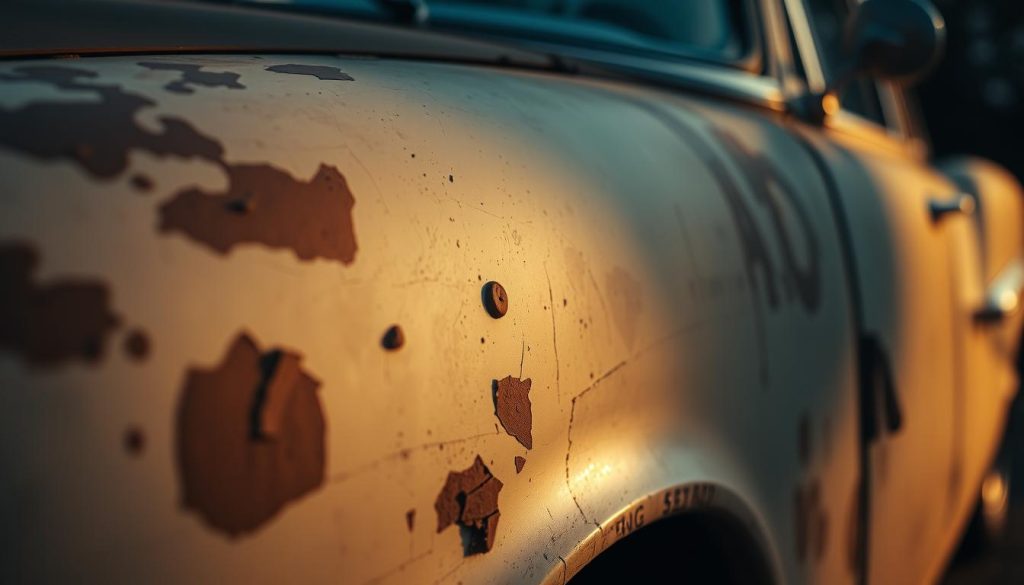
Inspect high-exposure areas like the roof, hood, and trunk for uniform fading or edge thinning. Run a fingernail over chips and deep scratches to see if the damage goes below the clear layer.
- Check body lines and plastic trim interfaces; thin areas need extra care.
- Under bright lighting, mark light haze versus heavy oxidation for targeted work.
- Dry with a soft towel so water behavior helps reveal how depleted the protection is.
Document the condition panel by panel and consider a small test spot. For a precise inspection and product recommendations, bring your vehicle to Miracle Body and Paint Collision Center before you buff or polish.
| Check | What to look for | Action |
|---|---|---|
| Wash & feel | Dirt-free surface, smooth after clay | Proceed to visual inspection |
| High-exposure panels | Uniform fading, chalky oxidation | Plan heavier correction or consult pro |
| Edges & trim | Thin clear, lifted areas near plastic | Use gentle products; avoid overworking |
| Deep chips & scratches | Damage past clear coat | Repair or refinish may be required |
Essential tools, pads, and products for safe auto detailing
Good results begin with a clear plan and the correct pads, liquids, and towels.
Wash and decontamination
Use a pH-safe automotive soap with a soft sponge or wash mitt to avoid grinding dirt into your car. Rinse often and dry with a clean microfiber towel.
A clay bar with lube removes embedded particles left after washing, so your pads and compound can contact the surface evenly.
Compounds and machine polish
Start with a rubbing compound for heavy cut, then switch to an ultrafine machine polish to refine gloss. Match the compound to the polish to reduce haze and swirl marks.
Buffing pad selection and towels
Choose a cutting pad for aggressive correction and a polishing pad for finishing. Label pads by purpose so you don’t mix them. Keep a soft microfiber towel handy to wipe residue between passes.
Protection and safety
Seal the corrected surface with wax or a ceramic spray for lasting protection. Tape edges and trim, manage buffer RPM per product guidance, and always test a small area before full panels.
- Pro tip: Work in two-foot sections with matched compound and pad for even results.
- Organize products and towels to avoid cross-contamination and speed the job.
- Miracle Body and Paint Collision Center uses professional-grade tools and products to protect your vehicle and deliver consistent outcomes.
| Step | Recommended Product | Purpose |
|---|---|---|
| Wash | pH-safe automotive soap + sponge | Remove surface dirt without scratching |
| Decontaminate | Clay bar + lubricant | Lift embedded particles for better pad contact |
| Cut & Polish | Rubbing compound + cutting pad; machine polish + polishing pad | Remove oxidation and refine gloss |
| Finish & Protect | Wax or ceramic spray; microfiber towel | Seal the coat and improve water behavior |
Step-by-step process to restore shine and remove scratches
Follow a clear, step-by-step workflow to restore shine and tackle light scratches safely.
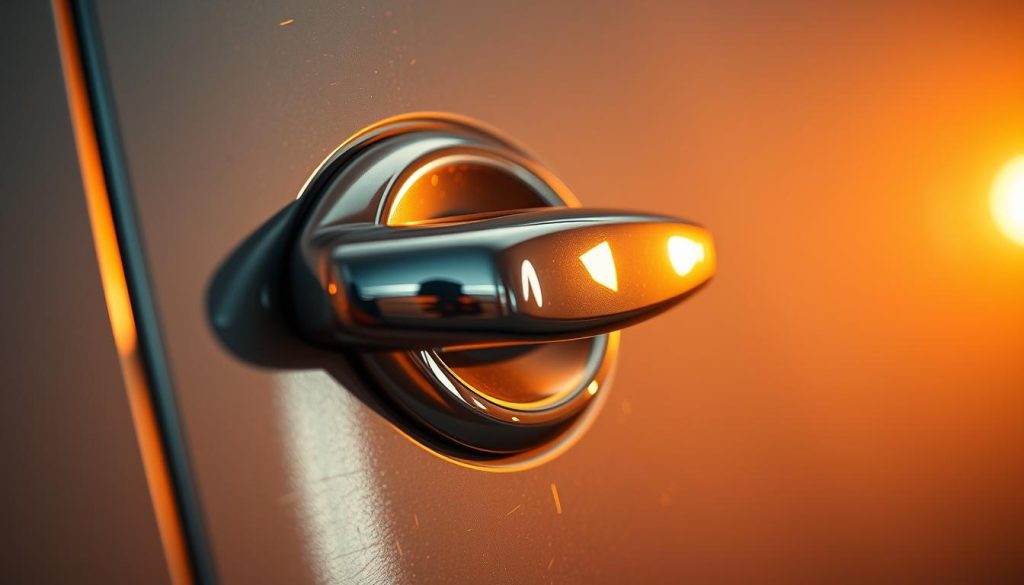
Thorough wash
Step one is a full wash. Use a separate wheel sponge so gritty brake dust never contacts the finish.
Rinse thoroughly and dry with a clean microfiber towel to avoid new swirls.
Clay bar decontamination
Use a clay bar with lubricant to remove bonded contaminants. Work small areas and wipe excess residue as you go.
This ensures compounds and pads meet the surface evenly for consistent cutting.
Compounding with a rotary polisher
Begin correction with a rubbing compound on a rotary polisher or DA. Work two-foot sections and keep mind of heat near edges and body lines.
Match each buffing pad to the compound and use product sparingly so pads remain effective.
Machine polish and ultrafine finishing
After compounding, switch to a machine polish and a polishing pad to reduce haze and swirl marks.
Finish with an ultrafine polish to remove holograms and maximize clarity, especially on darker colors.
Seal the clear coat
Seal the corrected clear coat with polish wax or a ceramic coating. Follow label directions and allow the surface to let dry before exposure to water.
If you prefer not to DIY, Miracle Body and Paint Collision Center can perform this entire process with professional equipment and experienced technicians.
| Step | Tool / Product | Key action |
|---|---|---|
| Wash | Wheel sponge, pH-safe soap, microfiber towel | Remove grit; dry to prevent swirls |
| Decon | Clay bar + lubricant | Lift embedded dirt; wipe excess |
| Compound | Rubbing compound + cutting pad | Work 2-ft areas; protect edges |
| Polish | Machine polish + polishing pad | Refine surface; reduce swirl marks |
| Seal | Polish wax or ceramic coating | Let dry; cure per directions |
Clear coat considerations: when polishing works and when repainting is required
Knowing when to polish and when to refinish a panel saves time and prevents lasting harm.
First, evaluate the clear layer across each panel. If the top film is chalky but intact, a light compound and a careful polish can restore gloss quickly.
If the clear coat is peeling, flaking, or gone in spots, mechanical polishing cannot replace lost material.
Safe correction limits
Work conservatively near edges and plastic trim; the clear coat is often thinner there.
Avoid heavy compounding if it would require removing significant film to level defects. That risks strike-through into base layers.
When to seek a professional refinish
- Peeling, widespread crow’s-feet cracking, or white edge lift indicate severe clear coat failure and need a refinish.
- If sanding or aggressive cutting is required to flatten deep damage, consult a pro to prevent over-thinning your car paint.
- Miracle Body and Paint Collision Center can measure thickness, assess the condition, and recommend panel refinish or a full respray when needed.
| Condition | Likely Action | Why |
|---|---|---|
| Chalky but intact clear coat | Light compounding & polish | Restores gloss without heavy material loss |
| Peeling or flaking | Panel refinish or repaint | Polish cannot replace missing film; only new application fixes it |
| Thinned at edges/trim | Spot evaluation; minimal passes or pro repair | Aggressive work causes strike-through and permanent damage |
After safe correction, protect the surface with a quality product such as a ceramic coating to slow future UV damage and reduce maintenance time.
Long-term protection: habits that keep your car looking like new
Small, consistent habits make the difference between a dull finish and a car that still looks new. Build a simple routine and stick to it on a regular basis to slow fading and surface wear.
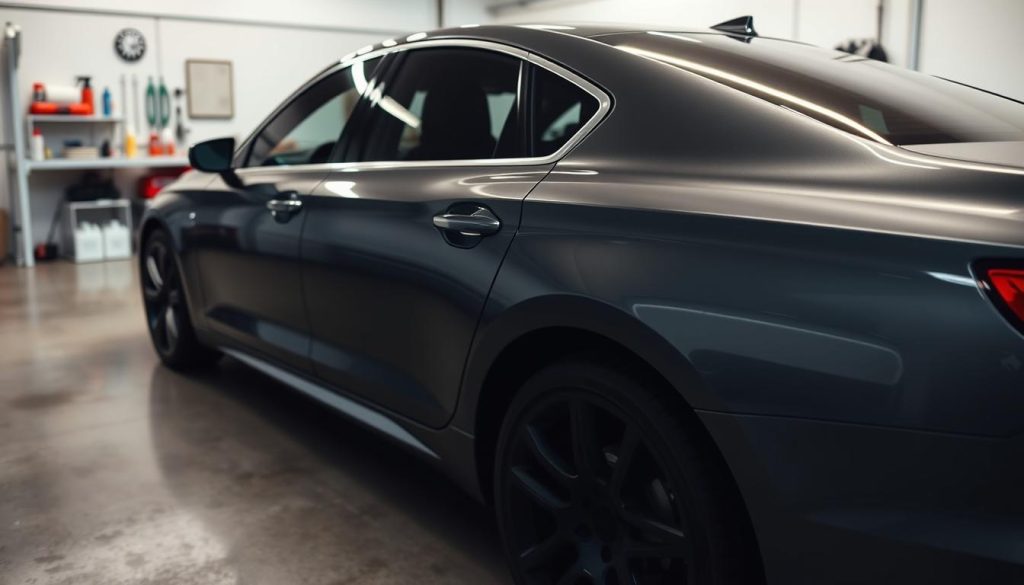
Regular basis care: wash schedule and gentle drying
Wash your vehicle on a regular basis to remove salt, pollen, and road grime before they bond to the paint.
Use an automotive soap, a gentle mitt, and a clean drying towel to avoid micro-scratches. Keep wheel tools separate so abrasive dust does not reach body panels.
Wax versus ceramic coating: choosing the right protection
Wax is easy to apply and refreshes gloss every few months. It adds a sacrificial layer that beads water and repels light contamination.
Ceramic or a ceramic spray lasts longer and makes cleaning simpler if you park outdoors. Ask Miracle Body and Paint Collision Center which product fits your driving and storage.
Smart storage: covered parking and quick cleanup
Park under cover when possible and remove bird droppings or tree sap quickly with the correct product. Small fixes now prevent costly work later.
- Build a regular basis wash routine to protect your finish.
- Use the right soap, mitt, and towel for safer drying.
- Choose wax or ceramic based on your climate and schedule.
| Option | Frequency | Benefit |
|---|---|---|
| Wax | Every 2–4 months | Easy refresh, good gloss |
| Ceramic | Annually | Longer-lasting protection |
| Ceramic spray | Monthly touch-up | Quick boost between treatments |
For a tailored maintenance plan and durable protection options, Miracle Body and Paint Collision Center can recommend a schedule based on how you drive and store your car.
Professional help vs DIY: choosing the right way to bring your paint back to life
Choosing the right path to revive your car begins with an honest look at the damage and expected results. As an owner, evaluate the surface for peeling, deep defects, or uneven prior work before committing to DIY.
When to call a pro for advanced damage, severe oxidation, or peeling
Call a professional if the clear layer is flaking, large areas are chalky, or scratches penetrate below the top film. These issues often need panel refinishing or a full repaint to fix.
A shop inspection clarifies the condition and how much you can safely remove scratches and oxidation without over-thinning the finish.
What to expect from Miracle Body and Paint Collision Center’s restoration approach
Technicians run measured test spots, match pads and product to the job, and use precise lighting to maximize improvement while minimizing risk.
- Quick DIY is fine for light oxidation with intact clear coat.
- Professionals handle color match, panel blend, and protective clear when repainting is required.
- You’ll receive honest guidance on cost, time, and likely outcomes before work begins.
| Owner choice | When it fits | What professionals add |
|---|---|---|
| DIY | Light oxidation, small scratches | Lower cost, quicker turnaround |
| Professional | Peeling, deep defects, uneven panels | Accurate assessment, color match, long-term durability |
Paint restoration results: realistic expectations for older vehicles
A short test spot lets you see how much life returns before you commit to the whole vehicle.
Buffing can restore shine on faded panels by working small areas with the right compound and pad. Finish with an ultrafine polish to reduce swirl marks and then seal the surface to lock in gains.
Be realistic: deep scratches and a peeling clear layer usually need a full refinish to reach like-new condition. Still, step-by-step correction often brings a driver car much closer to your goals at lower cost and in less time.
- Remove oxidation first, refine clarity next, then protect—the sequence matters.
- Textured plastic trim and old seals limit how close you can correct near edges.
- Test areas set expectations so you know what each product and pad combination will deliver.
For an expert read on what’s possible for your specific vehicle, schedule an assessment with Miracle Body and Paint Collision Center.
| Condition | Likely Result | Recommended Step |
|---|---|---|
| Light haze / chalky | Significant gloss return | Compound → polish → seal |
| Shallow scratches | Softened, may remain visible | Polish with ultrafine product |
| Peeling clear / deep damage | Refinish needed for perfection | Panel refinish or repaint |
Conclusion
A measured approach protects thin edges and yields uniform results for your car’s finish. You now understand how to assess paint, pick the right product and pad combinations, and work in short, controlled passes for predictable gains.
Follow the sequence—wash, clay, compound, polish, protect—and use a rotary polisher only when you’re comfortable. Keep time short per section, change pads often, and test products on a small area first.
Finish with a sealant or wax, apply a polish wax or ceramic option per instructions, and let dry before exposure. If the clear coat has failed or defects go deep, plan for refinishing rather than over-correcting.
If you’d rather have experts handle it, Miracle Body and Paint Collision Center delivers consistent results. North West San Antonio – Leon Valley: (210) 680-1987, 6217 Grissom Rd., San Antonio, TX 78238. North East San Antonio: (210) 858-3630, 4650 Walzem Rd, San Antonio, TX 78218. Hire Miracle Body and Paint Collision Center today to fix collision repair damage and protect your finish.

